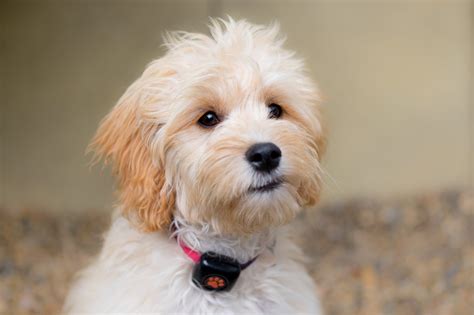Discover the benefits of hypoallergenic dog breeds and how to care for them. Learn about common allergens and find the right breed for your home.
Understanding Hypoallergenic Breeds
Understanding Hypoallergenic Breeds
Hypoallergenic dog breeds are a popular choice for individuals who suffer from allergies but still want to enjoy the companionship of a furry friend. These breeds are known for producing fewer allergens, making them a great option for allergy sufferers. It’s important to understand that while no dog breed is completely hypoallergenic, there are certain breeds that are better suited for individuals with allergies.
When considering hypoallergenic breeds, it’s important to note that these dogs tend to shed less dander, which is a common trigger for allergy symptoms. Additionally, hypoallergenic breeds often have a single coat, reducing the amount of hair and dander that is released into the environment. Some popular hypoallergenic breeds include the Poodle, Bichon Frise, Maltese, and Portuguese Water Dog.
While hypoallergenic dog breeds may be a great option for allergy sufferers, it’s important to remember that individual reactions can vary. It’s essential to spend time around the specific breed you are considering to assess your own sensitivity. Additionally, regular grooming and cleaning can help reduce allergens and improve the overall living environment for allergy sufferers and their furry companions.
Traits of Hypoallergenic Dogs
Hypoallergenic dogs are known for their unique traits that make them suitable for individuals who suffer from pet allergies. One of the key traits of hypoallergenic dogs is their non-shedding coats. These breeds often have hair instead of fur, which greatly reduces the amount of dander that can trigger allergic reactions in humans.
Another important trait of hypoallergenic dogs is their minimal saliva production. Unlike other breeds, hypoallergenic dogs produce less saliva, which means that they are less likely to spread allergens through their drool. This can be a significant advantage for allergy sufferers who are looking for a dog that won’t exacerbate their symptoms.
Additionally, hypoallergenic dogs tend to have a lower tendency to provoke allergic reactions in humans due to their reduced levels of allergens. This can make them a great choice for individuals who want to enjoy the companionship of a dog without constantly dealing with allergy symptoms.
Common Allergens in Dogs
When it comes to dog allergies, it’s important to understand the common allergens that can trigger reactions in sensitive individuals. One of the most common allergens in dogs is pet dander, which consists of tiny, even microscopic, flecks of skin shed by cats, dogs, rodents, birds and other animals with fur or feathers. Another common allergen is saliva, as dogs groom themselves and spread saliva around their fur, which can then spread to their environment. Finally, pet urine can also be a source of allergens, as it can easily spread and linger in the home environment.
In addition to these common allergens, dogs can also carry allergens from outdoor sources, such as pollen, mold, and dust mites. When a dog comes in from outdoors, they can bring these allergens inside on their fur, leading to potential reactions in sensitive individuals. It’s important to be aware of these potential allergens when considering a dog as a pet, especially for those with allergies.
Understanding these common allergens in dogs can help in managing and minimizing potential allergic reactions. By taking steps to reduce exposure to these allergens, such as regular grooming, cleaning, and keeping the home environment as free of allergens as possible, it is possible to coexist with a dog even for those with allergies. With the right knowledge and management, it is possible to enjoy the companionship of a dog without suffering from allergic reactions.
Choosing the Right Hypoallergenic Breed
When it comes to choosing the right hypoallergenic breed for your home, there are several factors to consider. One of the most important things to take into account is the size of the dog. While many hypoallergenic breeds are small in size, there are also larger breeds that are considered hypoallergenic. It’s essential to choose a breed that fits well with your living situation and lifestyle, whether it’s a small apartment or a spacious home with a yard.
Another factor to consider when choosing a hypoallergenic breed is the level of grooming and maintenance that the dog will require. While all dogs require regular grooming, some hypoallergenic breeds may have more specific grooming needs, such as regular haircuts or specialized shampoos. It’s important to take into account the time and effort you’re willing to commit to keeping your hypoallergenic dog happy and healthy.
Lastly, it’s crucial to consider the temperament and energy levels of different hypoallergenic breeds. Some breeds may have a higher energy level and require more exercise and mental stimulation, while others might be more laid-back and relaxed. Understanding the personality traits of different hypoallergenic breeds can help you choose a dog that will fit well with your family and lifestyle.
Benefits of Hypoallergenic Dogs
Benefits of Hypoallergenic Dogs
When it comes to finding the perfect pet for your family, there are many factors to consider. For those with allergies, the idea of bringing a furry friend into the home can be daunting. However, there are several benefits to choosing a hypoallergenic dog breed that can make it a great option for allergy sufferers.
First and foremost, hypoallergenic dogs are known for producing fewer allergens than non-hypoallergenic breeds. This can make a big difference for individuals who are sensitive to pet dander and other allergens. By choosing a hypoallergenic dog, you can significantly reduce the risk of allergic reactions in your home.
Furthermore, many hypoallergenic breeds have coats that shed less, which means less hair and dander floating around your home. This can lead to a cleaner living environment and reduce the amount of time and effort spent on cleaning up after your pet. In addition, hypoallergenic dogs are often recommended for individuals with asthma or other respiratory conditions, as they are less likely to trigger symptoms.
Caring for Hypoallergenic Breeds
When it comes to caring for hypoallergenic breeds, it’s important to understand the specific needs of these dogs. Hypoallergenic dogs are great for individuals with allergies as they produce fewer allergens, but they still require regular grooming to keep their coat and skin healthy. Regular bathing and brushing can help to reduce the amount of dander, saliva, and urine on their fur, which are common allergens for people. It’s also important to keep their living environment clean and free of dust and other allergens to ensure their health and well-being.
In addition to grooming, hypoallergenic breeds also require proper nutrition and exercise to maintain their overall health. Providing them with a balanced diet that meets their specific dietary needs and keeping them physically active can help to prevent health issues associated with their breed. It’s important to consult with a veterinarian to determine the best diet and exercise plan for your hypoallergenic dog, as their needs may vary based on their size, age, and breed.
Finally, it’s important to keep an eye out for any signs of allergies or skin issues in hypoallergenic breeds. While they may produce fewer allergens, they are still susceptible to skin conditions and allergies. Regular check-ups with a veterinarian can help to identify and address any health issues early on, ensuring that your hypoallergenic dog can live a happy and healthy life.
Introducing a Hypoallergenic Dog to Your Home
Introducing a hypoallergenic dog to your home can be an exciting and rewarding experience. Whether you’re bringing home a new puppy or adopting an adult dog, there are certain steps you can take to ensure a smooth transition for both the new pet and your family.
First and foremost, it’s important to create a safe and comfortable environment for your new hypoallergenic dog. This includes designating a specific area for your dog to rest and relax, as well as providing all the necessary essentials such as food, water, and toys.
Additionally, it’s crucial to introduce your new hypoallergenic dog to the other members of your household. This can include both human family members and any other pets you may have. Slow and supervised introductions can help to alleviate any potential stress or anxiety for both your new dog and your existing family members.
Frequently Asked Questions
What are hypoallergenic dog breeds?
Hypoallergenic dog breeds are breeds that produce fewer allergens, making them a better choice for people with allergies.
Are there any completely hypoallergenic dog breeds?
No dog breed is completely hypoallergenic, but some breeds are less likely to cause allergic reactions in people.
What are some examples of hypoallergenic dog breeds?
Examples of hypoallergenic dog breeds include Poodle, Bichon Frise, Maltese, Shih Tzu, and Portuguese Water Dog.
Do hypoallergenic dog breeds require special grooming?
Yes, hypoallergenic dog breeds usually require regular grooming to keep their coat free of allergens.
Are hypoallergenic dog breeds suitable for people with severe allergies?
While hypoallergenic dog breeds may cause fewer allergic reactions, it’s important for people with severe allergies to spend time with the specific breed to see if they have a reaction.
Can mixed breed dogs be hypoallergenic?
It’s possible for mixed breed dogs to inherit hypoallergenic traits from their parent breeds, but it’s not guaranteed.
What are some tips for managing allergies to dogs?
Some tips for managing allergies to dogs include keeping the home clean, using air purifiers, grooming the dog regularly, and seeking medical advice if necessary.





